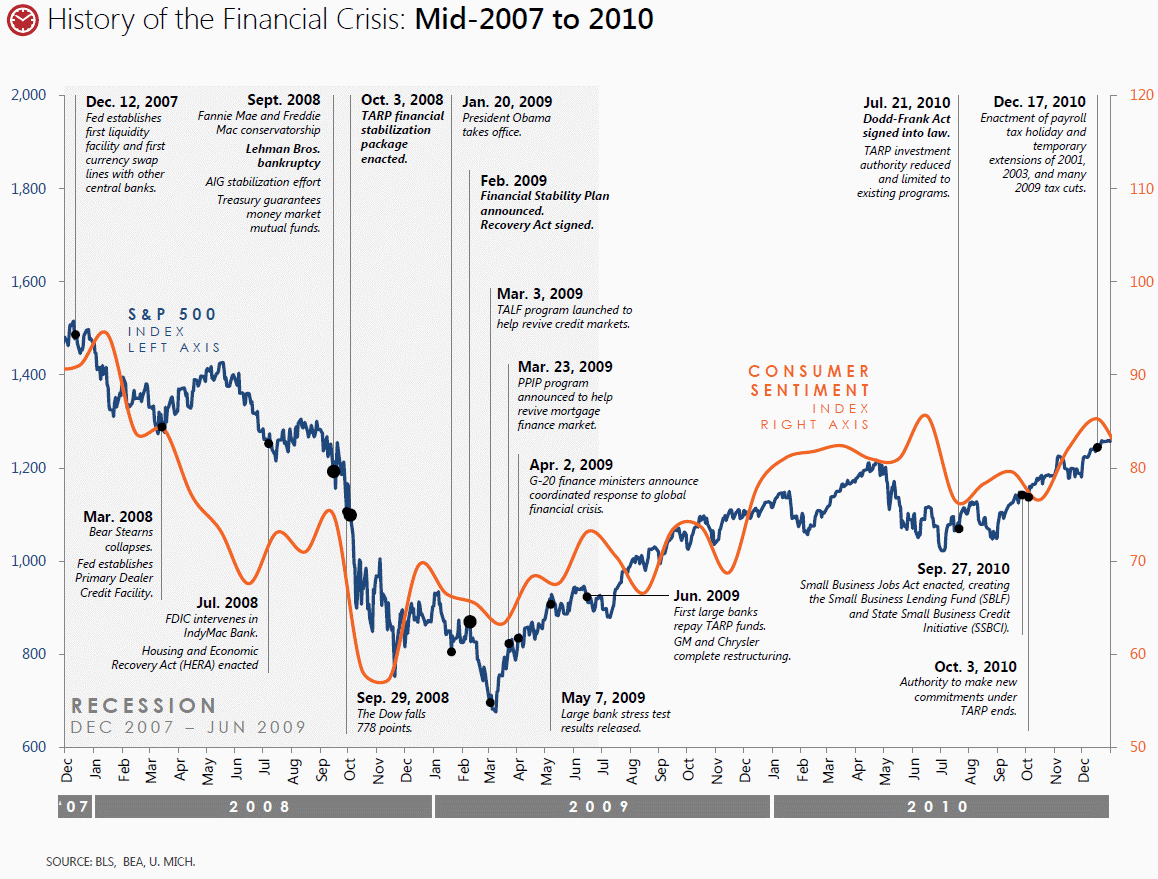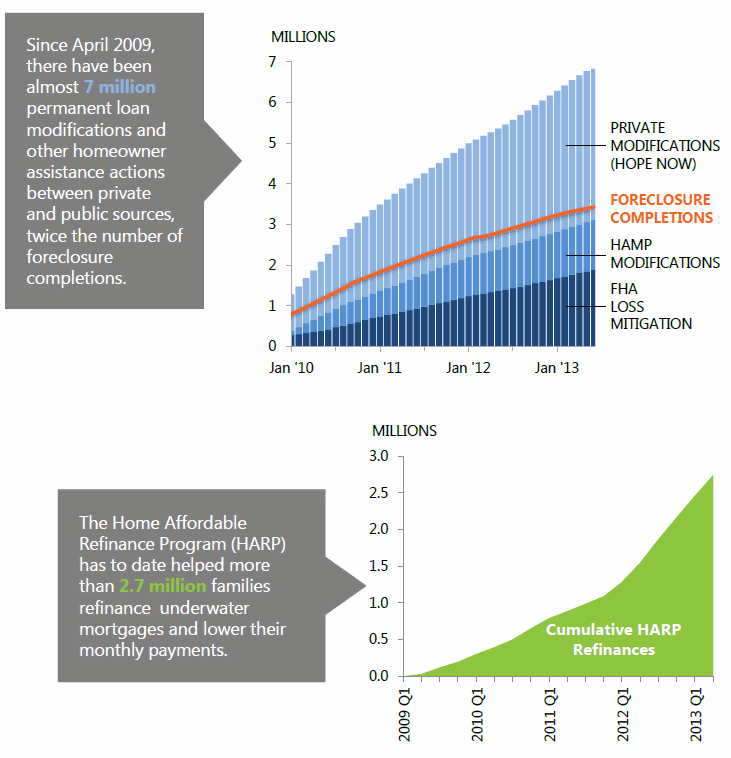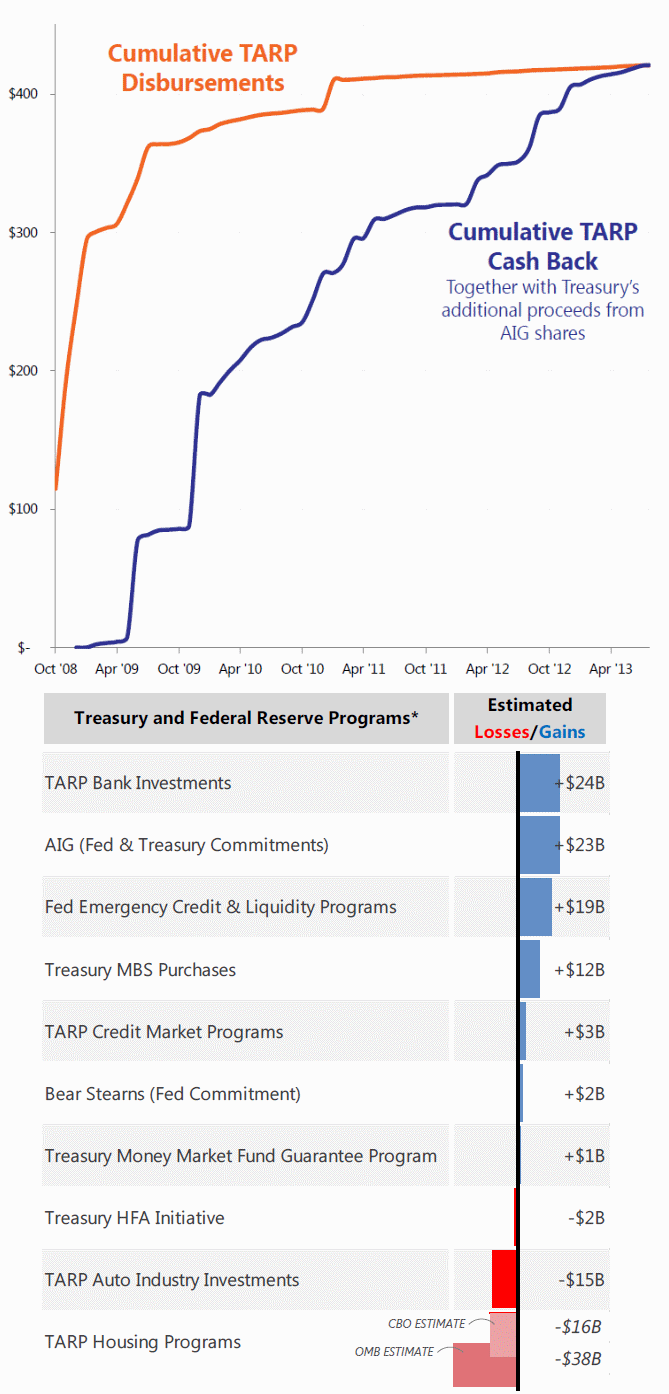The Treasury Department has released a graphics-filled Power Point presentation titled The Financial Crisis Five Years Later, Response, Reform, and Program. The slide show presents a tick-tock of events leading up to the financial crises, which peaked in the fall of 2008 and efforts made in all sectors towards recovering from the collapse and ensuring it will not happen again.
The authors of the presentation say the crisis was caused by many factors including an unsustainable housing boom fueled in part by the easy availability of mortgages, financial institutions taking on too much risk, and the rapid growth of the nation's financial system within a regulatory framework designed for a different era. The resulting Great Recession ultimately destroyed almost 9 million jobs and shrank the economy by hundreds of billions of dollars, throwing the GDP into multiple quarters of negative growth. The severity of the crisis is also illustrated by the rapid increase in corporate bond spreads and the dramatic fall in loss of household net worth. The crises was many years in the making, reaching its apex in September of 2008.

Within a few weeks many of the nation's largest financial institutions failed or were forced to merge to survive. Capital markets froze reducing the availability of credit dramatically and consumers and investors began to distrust the stability of the financial system. "Faced with this reality," the presentation says, "the federal government moved with overwhelming speed and force to stem the panic."
Early government actions, including broad-based guarantees of bank accounts, money market funds and liquidity by the Federal Reserve, were not enough so the Bush Administration proposed the law creating the Troubled Asset Relief Program or TARP which was passed by Congress and signed by President Bush in October. Programs funded by TARP tried to keep credit flowing, assist homeowners avoid foreclosure, and prevented the collapse of the auto industry.

TARP bank investment programs helped stabilize the financial system, providing capital to more than 700 banks nationwide. Today banks have paid back 99 percent of the funds that Treasury invested and Treasure actually made a profit from dividends, warrants, and other income. Where TARP participating banks once held 98 percent of all U.S. banking assets they now hold 1 percent.
Perhaps the sector of the economy that most affected consumers was the collapse of the housing industry and home prices coupled with a rising ride of mortgage defaults. Under TARP the Obama Administration took a number of actions to shore up housing.

Treasury says that addressing the crisis alone was not enough; it was necessary as well to address its underlying causes. The Dodd-Frank Wall Street Reform and Consumer Protection Act, signed into law by President Obama in July 2010, "is establishing new rules of the road that make our financial system safer for consumers, investors, and other market participants. Since then, we have completed or made significant progress implementing reforms that address each of the tenets of the law," improving accountability and transparency, ending "too big to fail," ending taxpayer bailouts, and protecting consumers.
In the last four years America's banks have added nearly $450 billion of capital to cushion against unexpected losses, support lending to consumers and businesses, and reduce overall leverage in the banking system. The Tier 1 capital ratio, a measure of the amount of safe, high quality capital in the system, is up significantly from pre-crisis lows while short-term wholesale funding, a less stable source of funding, is down from over 60 percent of bank assets in early 2007 to under 40 percent today.
Treasury says the cost of the financial crisis is property measured by its human impact; the jobs lost, the wealth destroyed, and the hardship suffered by millions of American families. From the beginning the government's primary purpose was to arrest the economic freefall and limit the recession's devastation, not to make money. But five years after TARP it is clear that Treasuries cumulative collections under TARP have exceeded total disbursements and the projected lifetime cost of TARP alone has fallen significantly from early projections.

Treasury assets that, at the five year anniversary of the worst of the crisis, the financial system is safer, stronger, and more resilient than it was beforehand. 'We are still living with the broader economic consequences, and we still have more work to do to repair the damage. But without the government's forceful response, that damage would have been far worse and the ultimate cost to repair the damage would have been far higher,' the report concludes.







